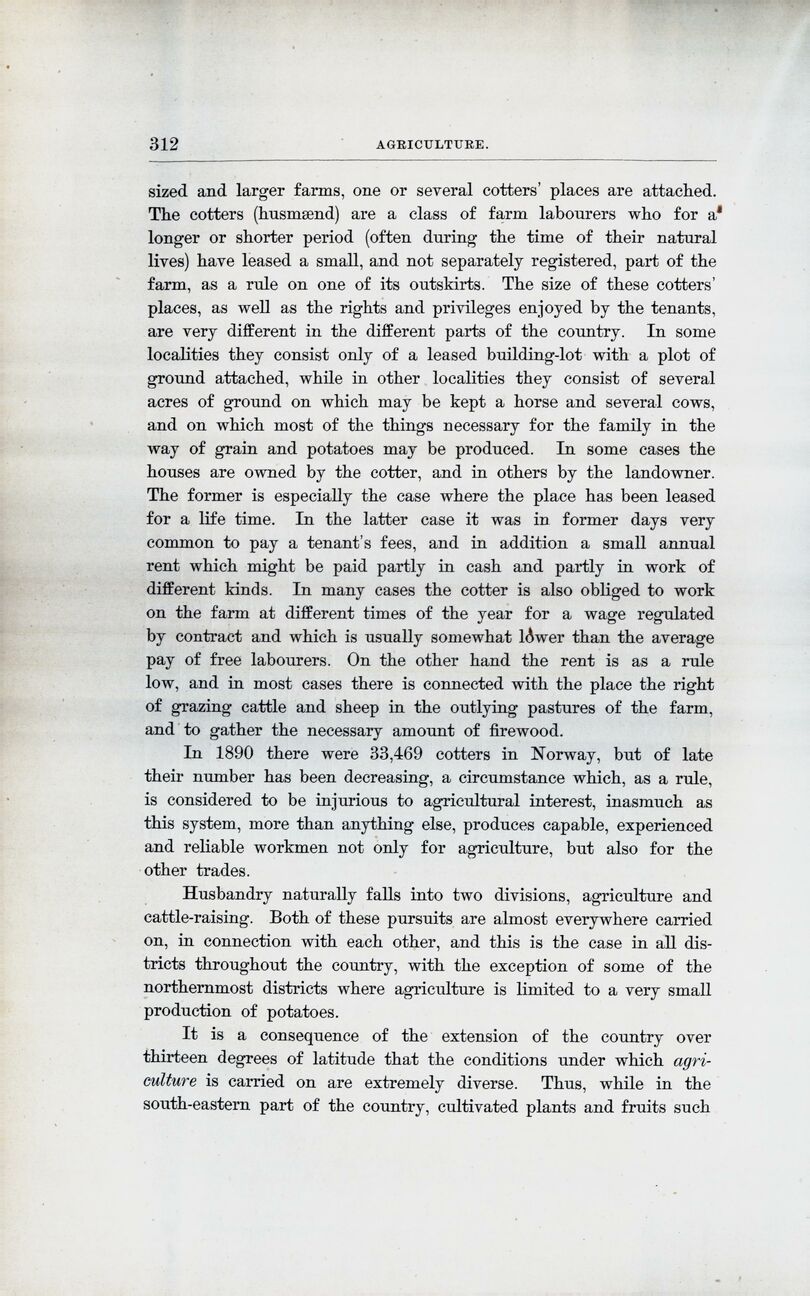
Full resolution (JPEG) - On this page / på denna sida - Agriculture, by G. Tandberg

<< prev. page << föreg. sida << >> nästa sida >> next page >>
Below is the raw OCR text
from the above scanned image.
Do you see an error? Proofread the page now!
Här nedan syns maskintolkade texten från faksimilbilden ovan.
Ser du något fel? Korrekturläs sidan nu!
This page has been proofread at least once.
(diff)
(history)
Denna sida har korrekturlästs minst en gång.
(skillnad)
(historik)
medium-sized and larger farms, one or several cotters’ places are attached.
The cotters (husmænd) are a class of farm labourers who for a
longer or shorter period (often during the time of their natural
lives) have leased a small, and not separately registered, part of the
farm, as a rule on one of its outskirts. The size of these cotters’
places, as well as the rights and privileges enjoyed by the tenants,
are very different in the different parts of the country. In some
localities they consist only of a leased building-lot with a plot of
ground attached, while in other localities they consist of several
acres of ground on which may be kept a horse and several cows,
and on which most of the things necessary for the family in the
way of grain and potatoes may be produced. In some cases the
houses are owned by the cotter, and in others by the landowner.
The former is especially the case where the place has been leased
for a life time. In the latter case it was in former days very
common to pay a tenant’s fees, and in addition a small annual
rent which might be paid partly in cash and partly in work of
different kinds. In many cases the cotter is also obliged to work
on the farm at different times of the year for a wage regulated
by contract and which is usually somewhat lower than the average
pay of free labourers. On the other hand the rent is as a rule
low, and in most cases there is connected with the place the right
of grazing cattle and sheep in the outlying pastures of the farm,
and to gather the necessary amount of firewood.
In 1890 there were 33,469 cotters in Norway, but of late
their number has been decreasing, a circumstance which, as a rule,
is considered to be injurious to agricultural interest, inasmuch as
this system, more than anything else, produce capable, experienced
and reliable workmen not only for agriculture, but also for the
other trades.
Husbandly naturally falls into two divisions, agriculture and
cattle-raising. Both of these pursuits are almost everywhere carried
on, in connection with each other, and this is the case in all
districts throughout the country, with the exception of some of the
northernmost districts where agriculture is limited to a very small
production of potatoes.
It is a consequence of the extension of the country over
thirteen degrees of latitude that the conditions under which
agriculture is carried on are extremely diverse. Thus, while in the
south-eastern part of the country, cultivated plants and fruits such
<< prev. page << föreg. sida << >> nästa sida >> next page >>